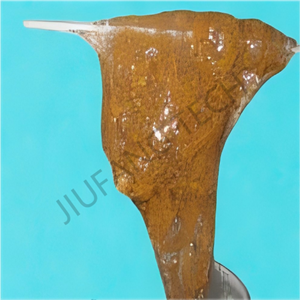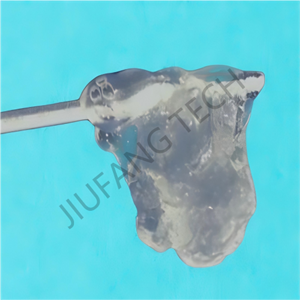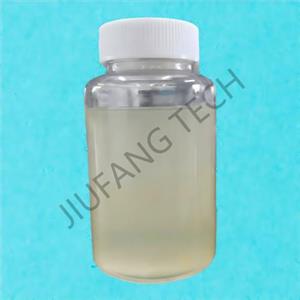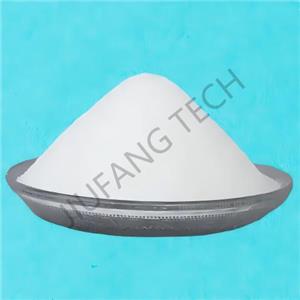Polyamine manufacturer
Polyamine water treatment
Shenyang Jiugfang Technology Co., Ltd has focused on customized chemicals production (Polyamine) and technical service and support for more than 20 years. As a Polyamine manufacturer We have customized the polymer (Polyamine) for the U.A.E. clients and gained high praise from them.
Polyamine is a chemical which made from epichlorohydrin.
During the production process of customized polymers, in addition to strictly implementing international, national and industry standards of the polymers, our company also optimizes the long-term accumulated on-site experience and the related working conditions and the produced polymers reasonably and determines an effective production plan.
Polyamines are a class of polymers that contain multiple amino groups (-NH₂, -NH-) in their molecular chains. Their properties are closely related to their chemical structures, especially the presence of amino groups, mainly including the following aspects:
1. Chemical Structure and Polarity
A large number of amino groups (including primary, secondary, or tertiary amino groups) are distributed on the molecular chain of polyamines. These groups are highly polar, and the nitrogen atoms in the amino groups contain lone pairs of electrons, making it easy for them to form hydrogen bonds with other molecules (such as polar molecules like water and alcohol). Therefore, polyamines generally have good polar affinity.
2. Water solubility and pH Responsiveness
Amino groups can be protonated under different pH conditions (for example, -NH₃⁺ is formed under acidic conditions), making polyamine molecules positively charged. Thus, most polyamines have good water - solubility under acidic or neutral conditions. Under strongly alkaline conditions, the amino groups are deprotonated, the polarity decreases, and a decrease in solubility or even precipitation may occur. This pH responsiveness endows polyamines with special applications in fields such as environmental science (such as pH - regulated flocculation) and biomedicine (such as in - vivo pH - sensitive release).
3. Cationic Characteristics Since amino groups are positively charged after protonation, polyamine is usually cationic polymers, enabling them to bind tightly to negatively charged substances (such as DNA, RNA, proteins, anionic surfactants, clay particles, etc.) through electrostatic attraction. For example:
It binds to DNA to form a complex (polyplex), which is used for gene delivery (such as polyethyleneimine, PEI).
It binds to anionic pollutants in water (such as phosphates, heavy - metal ions) for wastewater treatment.
4. High Reactivity
Amino groups are reactive functional groups and can undergo various chemical reactions:
React with carboxylic acids and acid anhydrides to form amide bonds (used for cross - linking or graft modification).
React with aldehydes to form Schiff bases (used for surface modification).
React with isocyanates (used for preparing polyurethane - modified materials). This high reactivity makes it easy to adjust the properties (such as reducing toxicity, improving hydrophilicity) through chemical modification.
5. Biological related Characteristics
The biocompatibility of different polyamine varies greatly: Natural polyamine (such as putrescine, spermidine) is important metabolites in organisms and are involved in processes such as cell proliferation.
Synthetic polyamine (such as PEI) is highly cationic and tend to damage cell membranes, resulting in high cytotoxicity. However, modification with polyethylene glycol (PEG) can improve this situation.
Polylysine (ε - polylysine) is a natural antibacterial agent that can inhibit both Gram - positive and Gram - negative bacteria and is widely used in food preservation.
6. Physical Properties
Film - forming Property: Due to intermolecular hydrogen bonds and polar interactions, polyamine easily form dense films and can be used for coatings (such as anti - corrosion, anti - static coatings). Adhesiveness: It has a strong adhesive force to polar surfaces (such as metals, glass, fibers) and can be used as a component of adhesives.
Thermal Stability: Aliphatic polyamines (such as PEI) have poor thermal stability and are prone to decomposition at high temperatures. Aromatic polyamines (such as those with benzene - ring structures) have higher thermal stability.
Typical Applications
Due to the above properties, polyamine is widely used in fields such as gene delivery, wastewater treatment, antibacterial materials, coating adhesives, and biomedicine (such as drug carriers). In conclusion, the core properties of polyamines stem from the amino groups on their molecular chains, endowing them with cationicity, reactivity, and polar affinity, making them a class of polymers with diverse functions.




